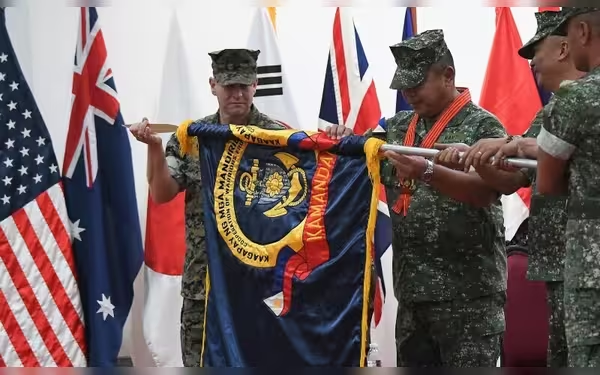Saturday, November 16, 2024 05:48 PM
US-Philippines Military Exercises Begin After China's Taiwan Drills
- US and Philippines launch annual military exercises 'Kamandag'.
- Exercises enhance defense capabilities near Taiwan amid rising tensions.
- China's drills serve as a warning to Taiwan's separatist forces.
 Image Credits: dawn.com
Image Credits: dawn.comThe US and Philippines begin military exercises 'Kamandag' following China's drills near Taiwan, highlighting regional security concerns.
In a significant display of military cooperation, the United States and the Philippines have commenced their annual military exercises, known as "Kamandag" or "Venom," just a day after China conducted military drills near Taiwan. These exercises are primarily focused on enhancing the defense capabilities of the northern coast of Luzon, the largest island in the Philippines, which is situated approximately 800 kilometers from Taiwan. This geographical proximity places the Philippines in a strategic position amid rising tensions in the region.
China's recent military maneuvers around Taiwan have raised alarms, as Beijing views Taiwan as a part of its territory. The Chinese government has made it clear that it will not hesitate to use force if necessary to assert its claims over the island. The drills conducted by China were described as a "stern warning" to what it terms "separatist" forces in Taiwan, highlighting the ongoing friction between the two sides.
The Kamandag exercises aim to strengthen the military partnership between the United States and the Philippines, which has been a long-standing alliance. This year’s drills are particularly crucial as they come at a time when regional security dynamics are shifting, and the need for collaborative defense strategies is more pressing than ever. The exercises will involve various military operations, including amphibious assaults and humanitarian assistance missions, showcasing the versatility and readiness of both nations' armed forces.
As the world watches these developments, it is essential to understand the broader implications of such military exercises. The United States has reiterated its commitment to supporting its allies in the region, while the Philippines seeks to bolster its defense capabilities amid growing concerns over China's assertiveness. This situation underscores the delicate balance of power in the Asia-Pacific region and the potential for conflict if diplomatic efforts do not prevail.
The Kamandag exercises serve not only as a demonstration of military strength but also as a reminder of the intricate web of alliances and tensions that define the current geopolitical landscape. As nations navigate these complex relationships, the hope remains that dialogue and diplomacy will ultimately prevail over conflict, ensuring stability and peace in the region.













